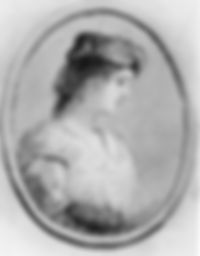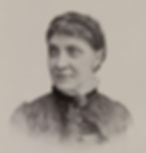- kristinaestle
- Feb 26
- 3 min read
Black History & the Underground Railroad in Belmont County, Ohio

Black History is American History: Black History & the Underground Railroad in Belmont County
Written By Kristina Estle, President of the History Detectives of Belmont County/ Director of the Underground Railroad Museum
With this month (Black History Month) almost over and we sit back and reflect upon all we have learned this month intertwined with current events, it is important to note, ‘Why not celebrate Black History year round, why just one month a year?’
Black History is a crucial part of American History, and yes, even here in Belmont County. Though a full college course could be prepared on the significant roles that Black individuals and communities played in the Ohio Valley, I want to share a couple of stories with you about Black individuals who were monumental in the underground railroad movement in Belmont County.
Important to note: Wheeling, WV, (Virginia until 1863, when it seceded) was known as the last stop for slavery. Richmond, Virginia was the largest importer of enslaved people. The ships would carry the enslaved cargo to Wheeling, where they would be kept in the basements of businesses or the jailhouse awaiting the slave auction that would be held on the corner of 10th and Market Street the following morning.
Samuel Cooper and Richard Naylor, two formerly enslaved men, operated a station of the underground railroad named Floral Valley. This station was located above Martins Ferry. They also owned and operated a ferry. At night the two men would ferry across the Ohio River to Wheeling, act intoxicated to deter attention, and approach the enslaved. They would help them escape, ferry them across the river, and help them onto the underground railroad. Most enslaved people utilizing the underground railroad in Belmont County would make their way into Jefferson County to Mount Pleasant.
Thomas Pointer, a formerly enslaved man from Virginia, lived in a log home behind the Jacob Van Pelt (a prominent UGRR conductor and abolitionist) house. Pointer would hide enslaved people in the attic of his home. His wife would pour boiling water across the pegs of the ladder and sprinkle cayenne pepper to confuse the bloodhounds and cut off the scent trails.
Important to note: Bloodhounds were trained to track the scents of the enslaved through the woods. Plantation owners and bounty hunters [there were rewards offered by the plantation owners (properly called enslavers) for the return of their “property”] would track the scents of the enslaved through the woods leading them to the front doors of many of these underground railroad stations. Belmont County had approximately 27 stations. Ohio was the most involved with the UGRR. The National Park Service’s Network to Freedom has 107 documented sites in Ohio, however, it is estimated that there were 220 possible stations.
The Captina Settlement, located five minutes outside of Barnesville, was one of the first free Black settlements in the state of Ohio. These communities were important in many ways. Black Laws were enacted by Ohio state legislature beginning in 1804 which limited the rights and activities of black individuals, even though the state was founded as a free state. These laws required that freedmen must post a $500 bond and letters from two white men stating that they had no criminal record and ensured good behavior. These statutes prevented black people from attending schools, testifying against white people and even performing any type of military duty. As discrimination intensified, free black communities began springing up across the state. The leader of the Captina community, Alexander ‘Sandy’ Harper, was an agent for the underground railroad. He would transport the enslaved from one station to another under the cover of the darkness of night. He worked with conductors in Somerton, Barnesville, and Morristown.
For questions or inquiries please reach out to Kristina at kristina.estle@historydetectivesbc.org or director@ugrrm.org
Underground Railroad Museum www.ugrrm.org
Did YOU Celebrate Black History Month?
YES
Not yet, but I plan to!
No








